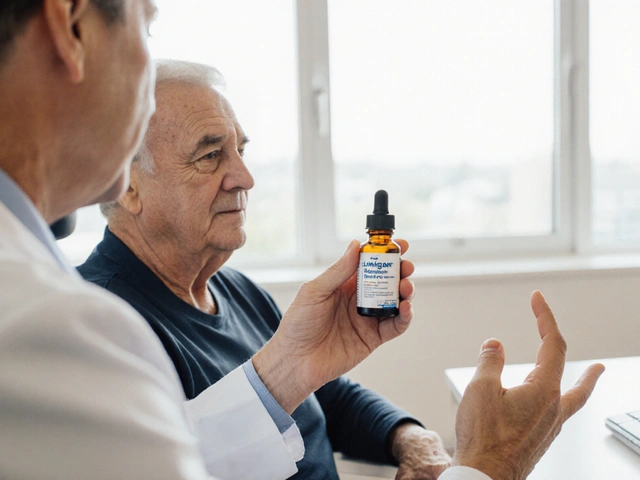Antimalarial QT Risk Calculator
This tool calculates your risk of QT prolongation when taking antimalarials with other medications. Based on clinical evidence from the article, it considers antimalarial type, drug interactions, and patient factors.
When you take an antimalarial drug, you’re not just fighting malaria-you’re also setting off a chain reaction inside your body that can affect your heart and how other medicines work. It’s not something most patients think about, but for doctors, pharmacists, and travelers heading to high-risk areas, these interactions can mean the difference between a safe trip and a life-threatening arrhythmia. The real danger isn’t just the malaria-it’s what happens when antimalarials team up with other drugs you’re already taking.
Why QT Prolongation Is a Silent Killer
Your heart beats because of electrical signals. These signals travel through heart cells in a precise rhythm, and one part of that rhythm-the QT interval-is measured on an ECG. When this interval gets too long, it can trigger a dangerous heartbeat called Torsades de Pointes. It’s rare, but it can turn fatal in minutes. Antimalarials like chloroquine, hydroxychloroquine, mefloquine, and lumefantrine all interfere with the same ion channel in heart cells: the hERG channel. This channel controls potassium flow, and when it’s blocked, the heart takes longer to reset between beats. That’s QT prolongation.Chloroquine and hydroxychloroquine don’t just block hERG. They also hit other channels like Cav1.2 and Kir6.2, making their effect even stronger. Mefloquine does something similar. The risk isn’t theoretical-case reports show Torsades de Pointes after even standard doses in people with no prior heart issues. And it’s not just about high doses. Hydroxychloroquine has a half-life of 40 to 50 days. That means if you take it for malaria prevention or lupus, it builds up over weeks. One dose might seem harmless. Ten doses? That’s a different story.
Which Antimalarials Are the Biggest Risks?
Not all antimalarials are created equal when it comes to heart risk. Here’s the real-world ranking based on clinical evidence:- Halofantrine - Highest risk. Withdrawn in many countries because of documented TdP deaths.
- Lumefantrine - Used with artemether in Artemisinin-based Combination Therapy (ACT). Risk rises with higher doses or repeated use. Half-life: 3-6 days.
- Chloroquine & Hydroxychloroquine - Widely used. Hydroxychloroquine has more documented interactions due to its long-term use in autoimmune diseases.
- Mefloquine - Strong hERG blocker. IC50 around 10 μM. Known for neuropsychiatric side effects, but cardiac risk is just as serious.
- Artemether - Low direct QT risk, but its metabolism triggers major drug interactions.
Artemisinin derivatives like artemether are safer for the heart-but they’re not harmless. They’re broken down by CYP3A4 and CYP2C19 enzymes. If you’re on something that blocks those enzymes, artemether doesn’t convert properly into its active form, dihydroartemisinin. That means the drug might not work as well. But here’s the twist: artemether itself can also induce CYP3A4, which can make other drugs less effective. It’s a two-way street.
CYP Interactions: The Hidden Domino Effect
The cytochrome P450 system is your body’s main drug-processing factory. When antimalarials mess with it, everything else you take can go haywire. Take hydroxychloroquine. It’s metabolized by CYP2C8, CYP3A4, and CYP2D6. That means if you’re on a common antibiotic like clarithromycin-which strongly inhibits CYP3A4-you’re looking at an 17.85 times higher chance of QT prolongation. That’s not a small risk. That’s a red flag.Choi et al. (2021) studied over 12 million patient records and found 12 drugs that, when taken with hydroxychloroquine, spike QT prolongation risk. Clarithromycin tops the list. Others include furosemide, piperacillin/tazobactam, and even some antidepressants. What’s scary is that eight of those drugs don’t usually prolong QT on their own-but together with hydroxychloroquine, they do. It’s not additive. It’s multiplicative.
Artemether-lumefantrine is another hotspot. Both are metabolized by CYP3A4. If you’re on a protease inhibitor for HIV-like ritonavir or lopinavir-you’re essentially shutting down the enzyme that clears these drugs. The result? Higher blood levels of lumefantrine. Higher risk of QT prolongation. The Northern Alberta HIV Program says this combo isn’t recommended. But in places where HIV and malaria overlap, doctors still use it-with extreme caution and ECG monitoring.

Who’s Most at Risk?
It’s not just about the drugs. It’s about the person taking them.- Older adults - Over 65? You’re more likely to have heart disease, kidney issues, or be on multiple meds. Lipophilic drugs like hydroxychloroquine accumulate more in fat tissue as you age, leading to higher exposure.
- People with existing heart conditions - Congestive heart failure, bradycardia, or prior QT prolongation? Avoid high-risk antimalarials entirely.
- Those on multiple QT-prolonging drugs - Antidepressants, antifungals, antiarrhythmics, even some antivirals. Stack them with hydroxychloroquine, and you’re playing Russian roulette with your heart.
- Patients with electrolyte imbalances - Low potassium or magnesium? That lowers the threshold for TdP. Even a mild imbalance can turn a moderate QT prolongation into a cardiac emergency.
Travelers on prophylaxis are often healthy young adults. They think they’re fine. But if they’re also taking azithromycin for a sinus infection or ciprofloxacin for traveler’s diarrhea, they’re doubling their risk. Azithromycin is often called “safe,” but TdP has been reported with it too-especially when combined with other drugs.
What Should You Do? A Practical Checklist
If you’re prescribing, dispensing, or taking an antimalarial, here’s what to do:- Check all current meds - Especially antibiotics, antifungals, heart meds, antidepressants, and HIV drugs. Use a drug interaction checker (like Micromedex or Lexicomp).
- Ask about heart history - Has the patient ever had a fainting spell? A known long QT? Family history of sudden cardiac death?
- Do a baseline ECG - Before starting any high-risk antimalarial, get a resting ECG. Measure QTc. If it’s over 450 ms in men or 470 ms in women, reconsider the drug.
- Monitor electrolytes - Check potassium and magnesium levels, especially if the patient is on diuretics or has diarrhea.
- Use alternatives when possible - For prophylaxis, atovaquone-proguanil has minimal QT risk. For treatment, intravenous artesunate has a short half-life and low interaction risk.
- Don’t assume short-term use is safe - Hydroxychloroquine builds up over weeks. Even a 7-day course for malaria can leave enough residue to cause problems if combined with another drug later.
What About Travelers?
If you’re going to Southeast Asia, Sub-Saharan Africa, or South America, you’re probably being told to take doxycycline, atovaquone-proguanil, or mefloquine. But if you’re also on a statin, a beta-blocker, or an acid reflux pill like omeprazole (which inhibits CYP2C19), you’re adding layers of risk.Atovaquone-proguanil is often the safest bet for travelers because it doesn’t affect QT. But it has its own issue: it disrupts mitochondrial electron transport. If you’re on metformin or other drugs that affect mitochondria, you could increase lactic acidosis risk. It’s not common, but it’s real.
For long-term travelers or expats, hydroxychloroquine is still used-but only if you’re getting monthly ECGs and blood tests. Many clinics now avoid it entirely for travelers under 50 unless there’s no alternative.
The Bigger Picture: Why This Matters Now
Malaria isn’t going away. In 2021, there were 247 million cases and nearly 619,000 deaths. Artemisinin resistance is spreading in Southeast Asia. That means we’re using more complex combinations, more often. More combinations = more interactions.And here’s the twist: hydroxychloroquine isn’t just used for malaria anymore. About 1.5 million Americans take it for lupus or rheumatoid arthritis. That’s a huge population now exposed to these risks-many without knowing why their doctor asked for an ECG.
Regulators are catching on. The FDA added QT warnings to hydroxychloroquine labels in 2011. The EMA did the same for lumefantrine in 2015. But guidelines haven’t changed much since 2014. That’s because the science is solid. We know the risks. What’s missing is consistent screening.
The future? Better risk models. Choi et al.’s 2021 study used electronic health records to predict dangerous combos with 95% accuracy. That’s the direction we’re heading: personalized risk scoring based on age, meds, ECG, and genetics.
Until then, the rule is simple: never assume an antimalarial is harmless just because it’s for malaria. It’s a powerful drug with powerful side effects-and it plays well with others, sometimes dangerously so.
Can hydroxychloroquine cause heart problems even if I’ve taken it for years without issues?
Yes. Hydroxychloroquine has a half-life of 40-50 days, meaning it builds up slowly in your body. Even if you’ve taken it for years without problems, adding a new drug like clarithromycin, azithromycin, or a heart medication can suddenly push your QT interval into dangerous territory. The risk isn’t about how long you’ve been on it-it’s about what else you’re taking now.
Is artemether-lumefantrine safe if I’m on HIV meds?
It’s risky. Protease inhibitors like ritonavir strongly inhibit CYP3A4, the enzyme that breaks down both artemether and lumefantrine. This can cause lumefantrine levels to spike, increasing QT prolongation risk. The Northern Alberta HIV Program advises against this combo unless absolutely necessary. If you must use it, get an ECG before and after treatment, and monitor for dizziness or palpitations.
What’s the safest antimalarial for someone with a heart condition?
For prophylaxis, atovaquone-proguanil is the safest option-it has minimal QT effects. For treatment, intravenous artesunate is preferred in emergencies because it’s short-acting and doesn’t accumulate. Oral artesunate is less ideal due to variable absorption. Avoid chloroquine, hydroxychloroquine, mefloquine, and lumefantrine entirely if you have a history of arrhythmias, heart failure, or prolonged QT.
Do I need an ECG if I’m just taking malaria pills for a 2-week trip?
If you’re healthy, under 50, and not on other heart-affecting drugs, a baseline ECG isn’t always required-but it’s strongly recommended. If you’re over 50, have high blood pressure, diabetes, or take any prescription meds-even statins or antibiotics-an ECG is non-negotiable. Many clinics now require it before prescribing any antimalarial with QT risk.
Can I take ibuprofen or acetaminophen with antimalarials?
Yes. Ibuprofen and acetaminophen don’t affect QT intervals or CYP enzymes significantly. They’re generally safe with antimalarials. But avoid NSAIDs like naproxen if you’re on hydroxychloroquine and have kidney issues-there’s a small risk of additive kidney toxicity. Stick to acetaminophen if you’re unsure.
Are there any antimalarials that don’t interact with other drugs at all?
No antimalarial is completely free of interactions. But atovaquone-proguanil has the fewest. It doesn’t affect CYP enzymes or QT intervals significantly. Its main interaction is with drugs that affect mitochondrial function (like metformin), but even that’s rare. For most people, it’s the safest choice when available.



